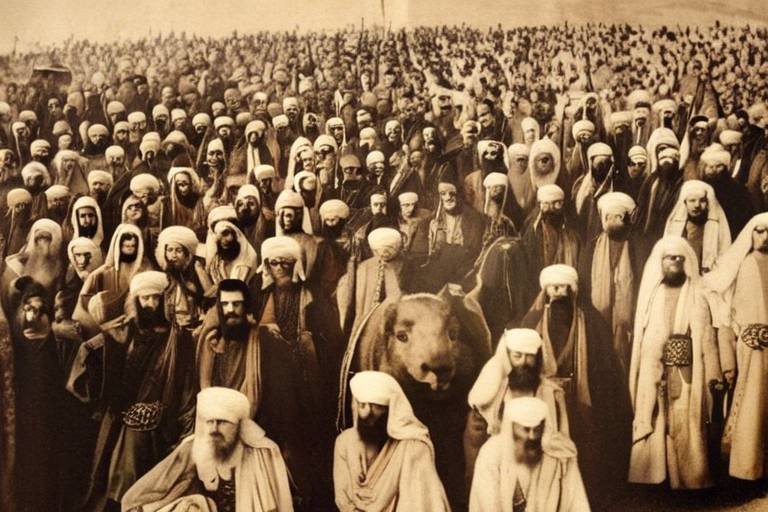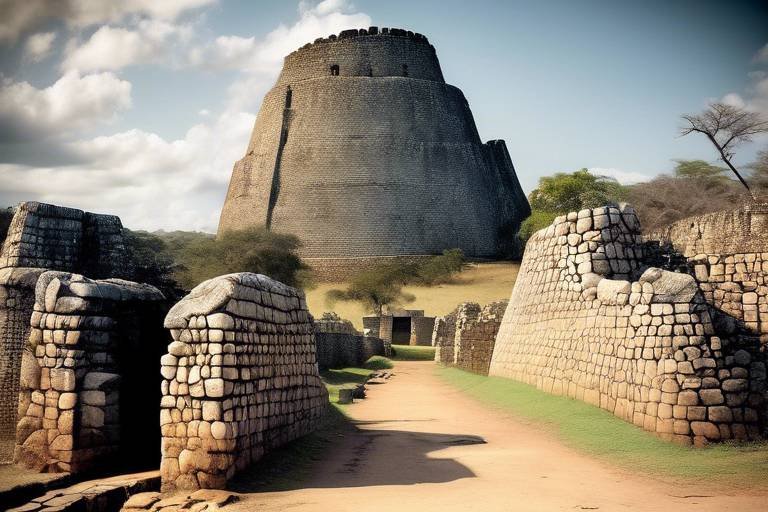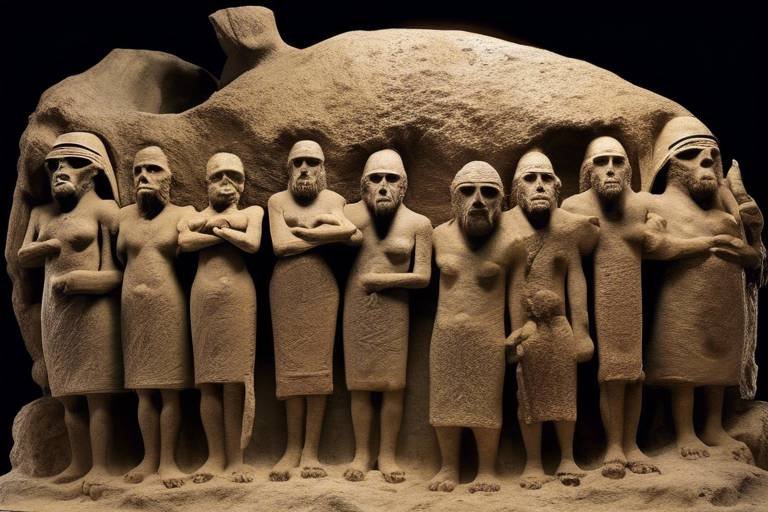The Enigma of the Tarascans - A Mesoamerican Mystery
Embark on a journey through the enigmatic world of the Tarascans, a mysterious civilization nestled in the heart of Mesoamerica. The Tarascans, also known as the Purepecha, captivate historians and archaeologists with their unique culture and puzzling history. Their legacy is shrouded in mystery, waiting to be unraveled by those curious enough to delve into the depths of their civilization.

Origin and History of the Tarascans
The Tarascans, also known as the Purepecha, were a fascinating civilization that thrived in the region of present-day Michoacán, Mexico. Their origins are shrouded in mystery, with theories suggesting migrations from various places in Mesoamerica. However, it is widely believed that the Tarascans established themselves in the highlands of western Mexico around the 14th century.
As they expanded their territory, the Tarascans developed a complex society with a hierarchical structure. They built fortified cities and engaged in trade with neighboring civilizations such as the Aztecs. The Tarascan Empire reached its peak in the 15th century, becoming a formidable power in the region.
The political organization of the Tarascans was centered around a monarchy, with a ruling class that held significant power. The Tariacuri dynasty, named after their legendary founder, governed the empire with a combination of military prowess and diplomatic alliances. The nobility played a crucial role in maintaining social order and overseeing various aspects of governance.
Religion was deeply ingrained in Tarascan society, with rituals and ceremonies dedicated to their gods and ancestors. Their pantheon included deities associated with agriculture, warfare, and fertility. Religious practices influenced every aspect of Tarascan life, from art and architecture to social customs and political decisions.
The artistic achievements of the Tarascans were remarkable, characterized by intricate pottery designs, elaborate metalwork, and finely crafted textiles. Their cities were planned with precision, featuring pyramids, plazas, and residential areas. The Tarascans were skilled artisans and architects, leaving behind a rich legacy of creativity and innovation.
Economically, the Tarascans were known for their agricultural prowess, cultivating maize, beans, and squash in terraced fields. They also engaged in long-distance trade, exchanging goods such as obsidian, copper, and cacao with distant regions. Commerce played a vital role in the prosperity of the Tarascan Empire.
Warfare was a constant reality for the Tarascans, as they defended their territory against rival civilizations like the Aztecs and the Tlaxcalans. Military strategies such as fortifications, alliances, and guerrilla tactics were employed to safeguard their borders and expand their influence. Conflict shaped the history of the Tarascans and influenced their interactions with other Mesoamerican cultures.
Despite their achievements, the Tarascan civilization faced internal strife and external pressures that contributed to its decline. Factors such as environmental changes, epidemics, and conflicts with neighboring powers led to the gradual weakening of the empire. By the time the Spanish conquistadors arrived in the 16th century, the Tarascans had lost much of their former glory.
Modern archaeological discoveries continue to shed light on the enigmatic Tarascan civilization, revealing new insights into their culture, technology, and interactions with other Mesoamerican societies. Ongoing research is expanding our understanding of this ancient civilization and highlighting the enduring legacy of the Tarascans in the history of Mesoamerica.

Political Structure and Governance
The political structure and governance of the Tarascans were characterized by a hierarchical system that defined the roles and responsibilities of different societal groups. At the helm of the Tarascan state was the ruler, known as the *Cazonci*, who held absolute power and was considered both a political and religious leader. The Cazonci was believed to have divine authority, guiding the state through his wisdom and decisions. Surrounding the ruler was a noble class, comprised of aristocrats and high-ranking officials who assisted in governing the empire and maintaining social order.
Beneath the nobility were the commoners, who formed the majority of the population and were responsible for various tasks such as agriculture, craftsmanship, and trade. Despite their lower status, commoners played a vital role in the economy and society, contributing to the overall prosperity of the Tarascan civilization. The governance structure was designed to ensure stability and efficiency, with clear lines of authority and a system of checks and balances to prevent abuse of power.
Moreover, the Tarascans had a decentralized political system, with local rulers governing semi-autonomously within their territories. These regional leaders, known as *calpixque*, had the authority to make decisions at the local level, while still pledging allegiance to the central government. This system allowed for effective governance at both the regional and imperial levels, fostering a sense of unity and cohesion among the diverse communities of the Tarascan empire.

Religious Beliefs and Practices
Delving into the spiritual realm of the Tarascans unveils a rich tapestry of religious beliefs and practices that shaped their cultural identity. At the core of Tarascan spirituality were their reverence for nature and the cosmos, reflected in their rituals and ceremonies that sought to maintain harmony with the divine forces believed to govern the world. The Tarascans worshipped a pantheon of deities, each associated with different aspects of life, such as agriculture, fertility, and war.
Their religious ceremonies were elaborate affairs, often involving music, dance, and offerings to appease the gods and ensure the well-being of their community. Priests held significant influence in Tarascan society, acting as intermediaries between the people and the spiritual realm. These religious leaders presided over ceremonies, interpreted omens, and provided guidance on matters of importance, reinforcing the connection between the earthly and the divine.
Art played a crucial role in expressing and honoring Tarascan religious beliefs. Intricately crafted pottery and metalwork depicted scenes from mythology and symbolized the power of the gods. Temples and ceremonial centers were adorned with ornate carvings and murals, serving as sacred spaces where the community gathered to pay homage to their deities and seek blessings for their endeavors.
The cycle of rituals and festivals punctuated the Tarascan calendar, marking important agricultural events, celestial phenomena, and historical milestones. These communal gatherings not only reinforced social cohesion but also reinforced the spiritual bond that united the Tarascan people in their shared beliefs and values.

Art and Architecture of the Tarascans
The Tarascans, also known as the Purépecha, were renowned for their exceptional artistic skills and innovative architectural designs that set them apart from other Mesoamerican civilizations. Their artistry encompassed a wide range of mediums, including pottery, metalwork, and textiles, reflecting their rich cultural heritage and advanced craftsmanship. The Tarascans' pottery, characterized by intricate designs and vibrant colors, served both utilitarian and ceremonial purposes, showcasing their mastery in ceramic artistry.
One of the most striking aspects of Tarascan art is their metalwork, particularly their exquisite gold and copper ornaments crafted with precision and intricate detailing. These precious metal objects were symbols of status and power, reflecting the sophisticated metallurgical techniques employed by Tarascan artisans. The intricate filigree work and symbolic motifs found in Tarascan metalwork exemplify the cultural significance attached to these artifacts.
In terms of architecture, the Tarascans were known for their well-planned cities and impressive ceremonial centers. Their urban planning emphasized geometric precision and architectural harmony, with structures built using locally sourced materials like volcanic stone. The Tarascan capital of Tzintzuntzan, with its pyramidal temples and palaces, exemplifies their architectural prowess and organizational skills.
The Tarascans' architectural achievements also extended to their distinctive yácatas, or circular pyramids, which served as religious and ceremonial platforms. These unique structures, with concentric levels symbolizing different cosmic realms, highlight the Tarascans' spiritual beliefs and architectural ingenuity. The integration of symbolic elements into their architectural designs reflects the deep connection between art, religion, and daily life in Tarascan society.

Trade and Economy of the Tarascans
Trade and economy were vital aspects of the Tarascan civilization, playing a significant role in their society's development and prosperity. The Tarascans engaged in a complex network of trade, both locally and with distant regions, showcasing their economic prowess and resourcefulness. Their economy was primarily based on agriculture, with maize being a staple crop that sustained their population and fueled their trading activities.
One of the key elements of the Tarascan economy was the utilization of a barter system, where goods were exchanged without the need for a standardized currency. This system facilitated trade within their own communities and with neighboring societies, allowing for the exchange of various commodities such as pottery, textiles, and precious metals.
The Tarascans were skilled artisans and traders, known for their intricate pottery and metalwork that were highly sought after in the region. Their craftsmanship and artistic abilities not only contributed to their economic prosperity but also elevated their cultural standing among other Mesoamerican civilizations.
Trade routes played a crucial role in the Tarascan economy, connecting different regions and facilitating the exchange of goods and ideas. These routes were carefully maintained and guarded, ensuring the safe passage of merchants and traders engaged in commercial activities.
Furthermore, the Tarascans' economy was supported by a sophisticated agricultural system that enabled them to produce surplus crops for trade. Their innovative farming techniques and irrigation methods allowed them to cultivate a variety of crops, sustaining their population and enabling them to participate in long-distance trade with distant societies.
In conclusion, the trade and economy of the Tarascans were integral to their civilization's success and influence in Mesoamerica. Their economic activities not only sustained their society but also fostered cultural exchange and interaction with neighboring civilizations, leaving a lasting legacy in the annals of history.

Warfare and Conflict
Warfare and conflict were integral aspects of Tarascan society, shaping their interactions with neighboring civilizations and influencing their political landscape. The Tarascans were known for their strategic military tactics and formidable armies, which played a significant role in both defending their territory and expanding their influence in the region.
One of the key features of Tarascan warfare was the use of specialized military units, such as the elite warriors known as the Eagle and Jaguar Knights. These skilled fighters were highly trained and played a crucial role in battles, often leading the charge against enemy forces with precision and ferocity.
Conflict with rival civilizations, such as the Aztecs, was not uncommon for the Tarascans. The Aztec-Tarascan wars were fierce and frequent, with both sides vying for control over valuable resources and territories. These conflicts often resulted in intense battles and strategic maneuvers, showcasing the military prowess of the Tarascans.
Furthermore, the Tarascans utilized a combination of defensive fortifications and offensive strategies to protect their cities and maintain their sovereignty. The construction of fortified citadels, such as the famous Tzintzuntzan complex, served as strongholds against enemy incursions and provided strategic advantages during times of conflict.
Despite their military strength, the Tarascans faced challenges from internal dissent and external pressures, which ultimately contributed to their eventual decline. The impact of warfare on Tarascan society was profound, leading to political instability and social upheaval that weakened their once-powerful civilization.
In the annals of Mesoamerican history, the Tarascans left a legacy of military prowess and resilience, showcasing their ability to navigate complex geopolitical landscapes and defend their cultural heritage against formidable adversaries. The study of Tarascan warfare and conflict provides valuable insights into the dynamics of ancient civilizations and the enduring impact of militaristic endeavors on societal development.

Decline and Legacy
As the Tarascan civilization reached its peak, a series of events unfolded that eventually led to its decline and eventual disappearance from the historical stage. While the exact reasons for their downfall remain a subject of scholarly debate, several factors are believed to have played a role in the decline of this enigmatic Mesoamerican society.
One significant factor that contributed to the decline of the Tarascans was the encroachment of external forces, particularly the expanding influence of the Aztec Empire. The Tarascans found themselves increasingly under pressure from the powerful Aztecs, leading to conflicts and territorial disputes that weakened their position in the region.
Additionally, internal strife and political instability within the Tarascan state also played a role in their decline. Rivalry among noble families, succession disputes, and challenges to central authority further undermined the cohesion and strength of the Tarascan society.
Economic factors, such as changes in trade patterns and agricultural practices, may have also contributed to the decline of the Tarascans. Disruptions in their trade networks, environmental changes, and resource depletion could have impacted their economy and overall stability.
Despite their eventual decline, the Tarascans left a lasting legacy in Mesoamerican history. Their unique artistic styles, architectural achievements, and cultural practices continue to fascinate scholars and enthusiasts alike. The remnants of their civilization serve as a testament to their ingenuity and resilience in the face of challenges.
Modern archaeological discoveries and ongoing research efforts continue to shed light on the enigmatic Tarascan civilization, providing new insights into their way of life, beliefs, and interactions with neighboring societies. By uncovering more about the Tarascans, we not only enrich our understanding of Mesoamerican history but also honor the legacy of this mysterious civilization.

Modern Discoveries and Research
Modern Discoveries and Research have shed new light on the enigmatic Tarascan civilization, offering fresh insights into their culture and history. Recent archaeological excavations have unearthed fascinating artifacts, such as intricately crafted pottery and elaborate metalwork, showcasing the artistic prowess of the Tarascans. These discoveries have provided valuable clues about their daily life, religious practices, and societal organization.
Furthermore, ongoing research efforts have focused on deciphering the hieroglyphic writing system used by the Tarascans, aiming to unravel the mysteries contained in their codices and inscriptions. By piecing together fragments of texts and symbols, scholars are piecing together a more comprehensive understanding of the Tarascan language and communication methods.
Archaeologists have also uncovered remains of ancient Tarascan cities and ceremonial centers, offering a glimpse into their urban planning and architectural achievements. The layout of these sites, along with the structures found within them, provides valuable clues about the social hierarchy, religious practices, and economic activities of the Tarascan civilization.
Moreover, scientific analyses of agricultural practices and food remains have revealed the sophisticated farming techniques employed by the Tarascans, highlighting their advanced knowledge of cultivation and irrigation methods. By studying the remains of crops and agricultural tools, researchers have gained insights into the diet, economy, and environmental adaptation strategies of the Tarascan people.
Overall, modern discoveries and research efforts continue to deepen our understanding of the Tarascan civilization, painting a more detailed picture of this enigmatic Mesoamerican society and its enduring legacy in the annals of history.
Frequently Asked Questions
- What were the major contributions of the Tarascans to Mesoamerican civilization?
The Tarascans made significant contributions to Mesoamerican civilization through their advanced architectural techniques, intricate metalwork, and unique artistic styles. Their urban planning and military strategies also influenced neighboring societies.
- How did the political structure of the Tarascans differ from other Mesoamerican civilizations?
The Tarascan political structure was characterized by a hierarchical system with a ruling class of nobility overseeing the governance of the society. This differed from the more centralized systems of other Mesoamerican civilizations like the Aztecs and Mayans.
- What led to the decline of the Tarascan civilization?
The decline of the Tarascan civilization was influenced by various factors including internal conflicts, external invasions, and environmental changes. These challenges weakened their society and ultimately led to their downfall.
- What recent archaeological discoveries have shed light on the Tarascans?
Recent archaeological findings have uncovered new insights into Tarascan culture, including the discovery of elaborate tombs, artwork, and artifacts that provide a deeper understanding of their religious beliefs, daily life, and interactions with other civilizations.



















